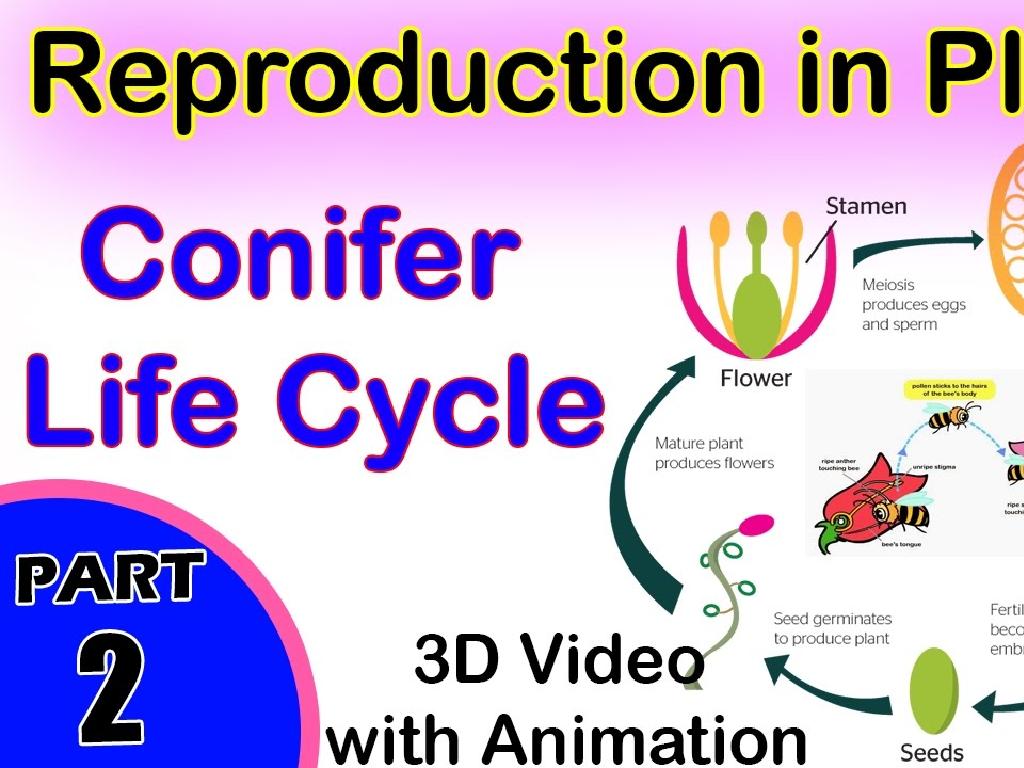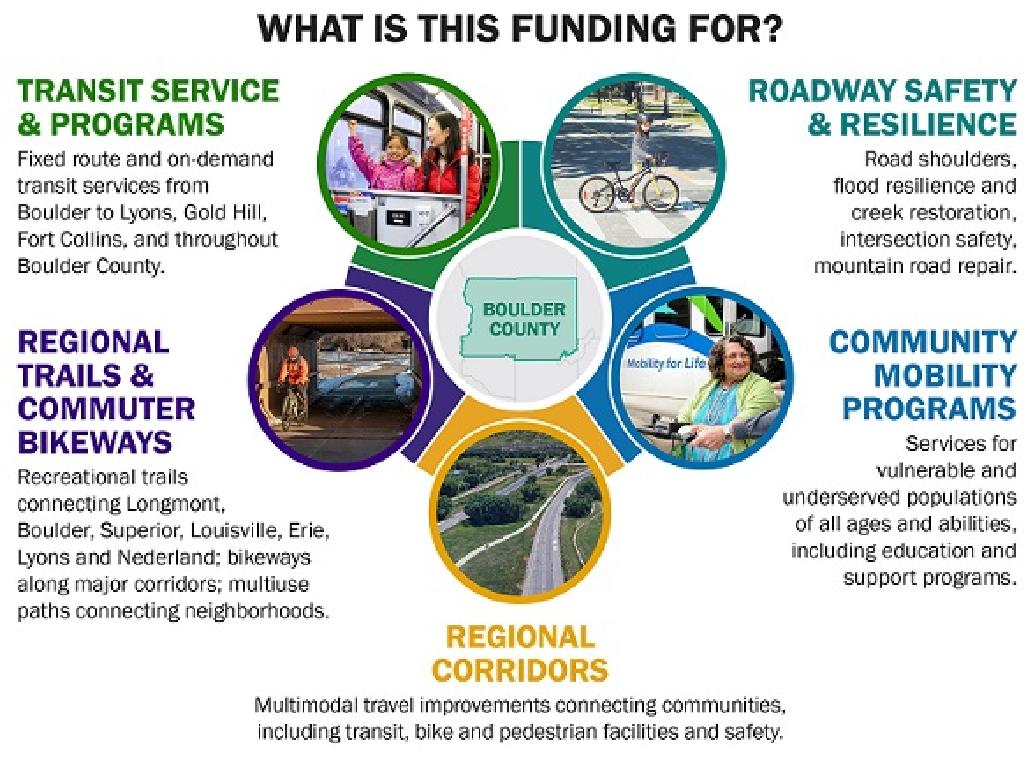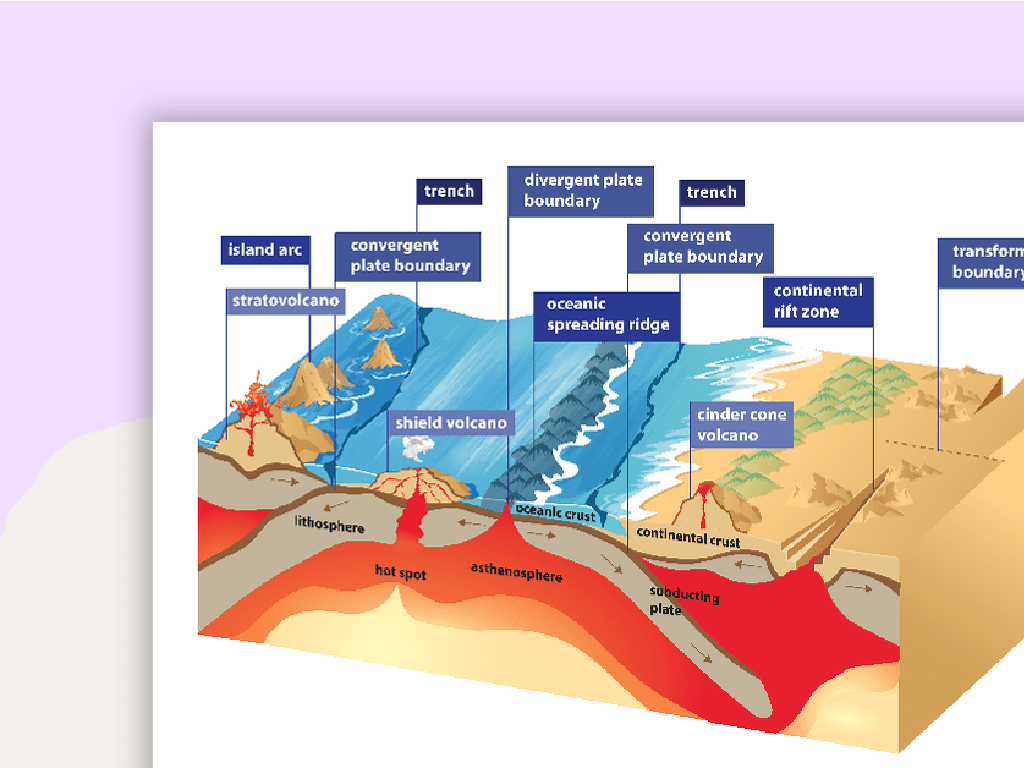Identify Steps Of The Scientific Method
Subject: Science
Grade: Eighth grade
Topic: Science Practices And Tools
Please LOG IN to download the presentation. Access is available to registered users only.
View More Content
The Scientific Method: A Tool for Discovery
– What is the Scientific Method?
– A systematic approach to problem-solving.
– Steps of the Scientific Method
– Observation, Hypothesis, Experiment, Analysis, Conclusion.
– Solving Problems Scientifically
– Apply method to class experiment on plant growth.
– Relevance to Everyday Life
– Critical thinking and informed decision-making.
|
This slide introduces the Scientific Method as a fundamental process used by scientists to solve problems and answer questions. Begin by explaining that the Scientific Method is a structured approach to investigation and discovery. Outline the key steps: making observations, forming a hypothesis, conducting experiments, analyzing data, and drawing conclusions. Emphasize the importance of this method in class through a practical example, such as a plant growth experiment, to illustrate how each step is applied. Highlight how the Scientific Method is not just for scientists but is also applicable in everyday life, fostering critical thinking and helping to make informed decisions. Encourage students to think of situations where they have unknowingly used the Scientific Method.
Understanding the Scientific Method
– Define the Scientific Method
– A process for experimentation to explore observations and answer questions.
– It’s a systematic approach
– Steps followed in a logical, orderly manner to gather and analyze data.
– A tool for inquiry and problem-solving
– Used to investigate phenomena, acquire new knowledge, or correct previous knowledge.
– Essential for scientific studies
|
The Scientific Method is a foundational concept in science education, providing a structured methodology for students to investigate and understand the natural world. It involves making observations, forming questions, generating hypotheses, conducting experiments, analyzing data, and drawing conclusions. Emphasize the importance of each step in the process and how it contributes to building a robust scientific inquiry. Encourage students to think of questions they might have about everyday phenomena and how they could apply the scientific method to find answers. Discuss the iterative nature of the method, where results often lead to new questions and further investigation.
Steps of the Scientific Method
– Start with a curious question
– What do you want to learn or prove?
– Conduct thorough background research
– Gather information related to your question
– Formulate a testable hypothesis
– Predict the outcome of your question
– Experiment to test the hypothesis
– Design and perform an experiment to check predictions
|
This slide introduces the scientific method as a systematic way of learning and exploring the world. Students should understand that scientific inquiry starts with a question that arises from observation or curiosity. Emphasize the importance of conducting research to see what is already known about the topic. Guide them to construct a hypothesis, which is a clear, testable prediction. Then, explain how to plan and carry out an experiment to test this hypothesis. After the experiment, students should analyze the data to draw conclusions and finally, communicate their findings. Encourage students to think of questions they might want to explore and discuss how they would go about investigating them.
The Scientific Method: Asking a Question
– Inquiry starts with a question
– Examples of scientific questions
– ‘How does temperature affect plant growth?’ or ‘What factors influence the boiling point of water?’
– Traits of a good question
– Clear, focused, and researchable within the scope of the study
– Formulating your own questions
– Encourage students to ask questions about their observations
|
This slide introduces the first step in the scientific method: asking a question. It’s crucial for students to understand that scientific inquiry begins with curiosity and questioning. Provide examples of scientific questions to illustrate the concept. Discuss the characteristics of a good scientific question, emphasizing that it should be clear, focused, and researchable. Encourage students to think about questions they could ask based on their own observations or experiments. This will set the foundation for them to engage in their own scientific inquiries and understand the importance of a well-structured question in the scientific process.
The Scientific Method: Background Research
– Importance of research in science
– Research underpins hypotheses and experiments
– Reliable sources for background info
– Use academic journals, books, and verified online databases
– Effective note-taking strategies
– Highlight key facts, summarize findings, and reference sources
– Organizing information systematically
– Use outlines, index cards, or digital tools to categorize notes
|
Background research is a critical step in the scientific method as it provides the necessary context and foundation for forming a hypothesis and designing an experiment. It’s essential to guide students on how to identify and use reliable sources, such as peer-reviewed journals, reputable books, and credible websites. Teach them effective note-taking techniques, including highlighting important information, summarizing in their own words, and proper citation practices. Finally, show them how to organize their notes in a way that makes it easy to retrieve information, such as using outlines, index cards, or digital tools like spreadsheets or databases. This will prepare them for more efficient and structured scientific inquiry.
Constructing a Hypothesis
– Define a hypothesis
– A hypothesis is a tentative explanation that can be tested.
– Formulating a testable hypothesis
– It should be specific and based on observations.
– Hypothesis examples in science
– For example, ‘If plants are given fertilizer, then they will grow taller.’
– Importance of a hypothesis
|
This slide introduces the concept of a hypothesis in the scientific method. A hypothesis is an educated guess or prediction that can be tested through experimentation. When formulating a hypothesis, students should be encouraged to make it as specific as possible and to base it on prior knowledge or observations. Provide examples of hypotheses from different scientific disciplines to illustrate how they guide experiments. Emphasize that a good hypothesis is not just a guess; it’s an informed prediction that sets the stage for scientific investigation. Discuss the importance of a hypothesis in guiding the research process and how it can be supported or refuted by experimental data.
Experimentation: The Heart of Science
– Designing a fair scientific test
– A fair test changes one factor at a time while keeping others constant.
– Understanding variables in experiments
– Independent variables are changed to observe effects on dependent variables, while controlled variables remain constant.
– Ensuring safety and ethics
– Safety rules protect us, and ethics ensure experiments are fair and respectful.
– Analyzing and interpreting data
– Use graphs and calculations to make sense of the results.
|
This slide aims to guide students through the critical aspects of experimentation within the scientific method. Emphasize the importance of a fair test, which is achieved by changing only one variable at a time to isolate its effects. Discuss the roles of different types of variables: independent variables are the ones you change, dependent variables are the ones you measure, and controlled variables are the ones you keep the same. Highlight the necessity of adhering to safety guidelines to prevent accidents and ethical considerations to conduct responsible science. Lastly, stress the importance of analyzing the collected data to draw meaningful conclusions. Encourage students to think critically about how each step of their experiment design can affect the outcomes and validity of their results.
Analyzing Data in Scientific Method
– Collecting and recording data
– Gather observations using tools and record accurately
– Interpreting data patterns
– Look for trends, cycles, or inconsistencies in the data
– Using data to support hypothesis
– Confirm if data aligns with the predicted outcome
– Refuting hypothesis with data
– Present data that contradicts the initial hypothesis
|
This slide focuses on the critical step of data analysis within the scientific method. Students should understand the importance of meticulous data collection, as it forms the basis for all subsequent analysis. Emphasize the use of appropriate tools for measurement and the need for accurate record-keeping. Teach students how to look for and interpret patterns in their data, which can reveal relationships or causality. Discuss how data serves as evidence to either support or refute a hypothesis, and how scientific knowledge is built on this process of hypothesis testing. Provide examples of famous experiments where data led to significant scientific breakthroughs or, conversely, where hypotheses were disproven.
Drawing Conclusions in Scientific Method
– Analyzing experimental outcomes
– Look at the data to see what it tells us about our question
– Comparing results to hypothesis
– Does the data support or refute our initial prediction?
– Recognizing unsuccessful experiments
– Not all experiments work as expected, and that’s okay
– Learning from every outcome
– Every result is a step towards scientific understanding
|
This slide focuses on the final step of the scientific method: drawing conclusions. Students should understand how to analyze the data they’ve collected and interpret what it means in relation to their hypothesis. Emphasize that not every experiment will yield clear or expected results, but this is a natural part of the scientific process. Encourage students to think critically about their findings, whether they support or contradict their hypothesis, and to consider what they can learn from the experiment regardless of the outcome. Discuss how unexpected results can lead to new questions and further investigation. This step is crucial for developing a deeper understanding of the scientific inquiry and for fostering a growth mindset.
Communicating Results in Science
– Importance of sharing results
– Sharing advances knowledge and invites validation
– Methods of communication
– Reports, journals, conferences, and media
– Crafting a scientific report
– Structured format with abstract, methodology, and findings
– Designing a presentation
– Visual aids and clear data representation are key
|
This slide emphasizes the significance of communicating scientific results effectively. Sharing findings is crucial for the advancement of science, as it allows for peer review and further research. Students should understand the various platforms for communication, such as scientific journals, conferences, and digital media. Preparing a scientific report requires a structured approach, including an abstract, introduction, methodology, results, and conclusion. When designing a presentation, the focus should be on clarity, using visual aids and ensuring data is presented in an understandable manner. Encourage students to practice these skills by preparing their own reports or presentations on class experiments.
Class Activity: Scientific Method in Action
– Form small experiment groups
– Develop a simple experiment
Use the scientific method steps for guidance
– Present your hypothesis
What’s your prediction based on the initial observation?
– Share experiment design and expected results
Explain your procedure and potential outcomes
|
This activity is designed to reinforce the students’ understanding of the scientific method by applying it in a practical setting. Divide the class into small groups and have each group come up with a simple experiment that can be conducted in the classroom or at home. They should use the steps of the scientific method as a guide: making an observation, forming a hypothesis, designing an experiment, conducting the experiment, and then presenting their expected results. Encourage creativity and ensure that each group understands the importance of controlling variables in their experiment. Possible experiments could include testing the effects of sunlight on plant growth, the reaction of vinegar and baking soda, or the strength of different paper towel brands. After the activity, each group will present their hypothesis, experiment design, and expected results to the class.






